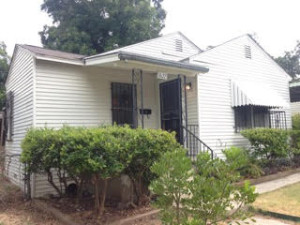This article is now on Inman News.
Key Takeaways
- Zillow states on its website that it is a “useful starting point” to assist homebuyers with valuing real estate properties.
- Although most investors say that Zestimates seldom reflect what’s happening on the ground, some new real estate investors seem to rely on Zillow as their main data point on property values.
- Rather than relying on Zillow, it’s better to find local agent investors who operate in the real world and can provide accurate values of homes based on many factors, including comps, buyer and seller motivation, damages and more.
Zillow states on its website that it is a “useful starting point” to assist homebuyers with valuing real estate properties. Some real estate investors say that though Zillow is indeed a data resource, it can mislead investors about the real value of property.
They claim that Zillow Zestimates seldom reflect what is happening on the ground in neighborhoods that they know well. However, some new real estate investors seem to rely on Zillow as their main starting point for property values.
Close examination suggests that Zillow might not be a good tool for gauging real estate investment property values.
The Washington Post reported in February that the error rate for Zestimates “can be high.”
Another article in the same paper states that Zillow’s predicted values “are wildly inaccurate and inconsistent.”
The fact is that the Zestimate utilizes data pulled from public records and some homeowners; even Zillow states that its values are mere estimates. However, many investors fail to scrutinize the fine print and take those numbers at face value.
Those investors should note that Zillow is primarily a listing aggregator. It might be pulling sales data from many secondary databases that are not frequently updated. Therefore, it might take a month or longer for local neighborhood prices changes to show online.
A good example of the skewed data that Zillow can rely on is shown in the following example. This house in San Antonio, Texas, in the 78201 was bought by an investor for $65,000 cash in July 2015:
It sold with owner financing for $99,000 five weeks later. Zillow stated that the value is $74,100. That price is more than the investor paid by $10,000. And the owner finance sale was not reflected in the Zestimate because it was an off-market deal.
Many real estate investment purchases might be done in this fashion: off-markets are not reflected in Zillow data.
This article on Zillow.com states that has a median error rate of 8 percent. This statistic suggests that Zillow might not be an effective way to price real estate investments.
Zillow can be a useful starting point for property values, but if a real estate investor wants to obtain accurate real estate investment property prices, there are better options:
- Obtain access to local, brokerage-based sites in your desired cities. They will provide you with fresh property data that might be more accurate.
- Locate an extremely experienced investor and real estate agent in your city. Local agent investors operate in the real world and can provide accurate values of homes based on many factors, including comparable listings, buyer and seller motivation, damages and more.
- You should target an active investor who does 50 or more deals per year in your chosen neighborhoods. He will most likely have a bead on what prices are like right now.
You should target an active investor who does 50+ deals per year in your chosen neighborhoods. - An experienced and successful investor in your market could be the ticket to getting a real estate deal at the best price.

